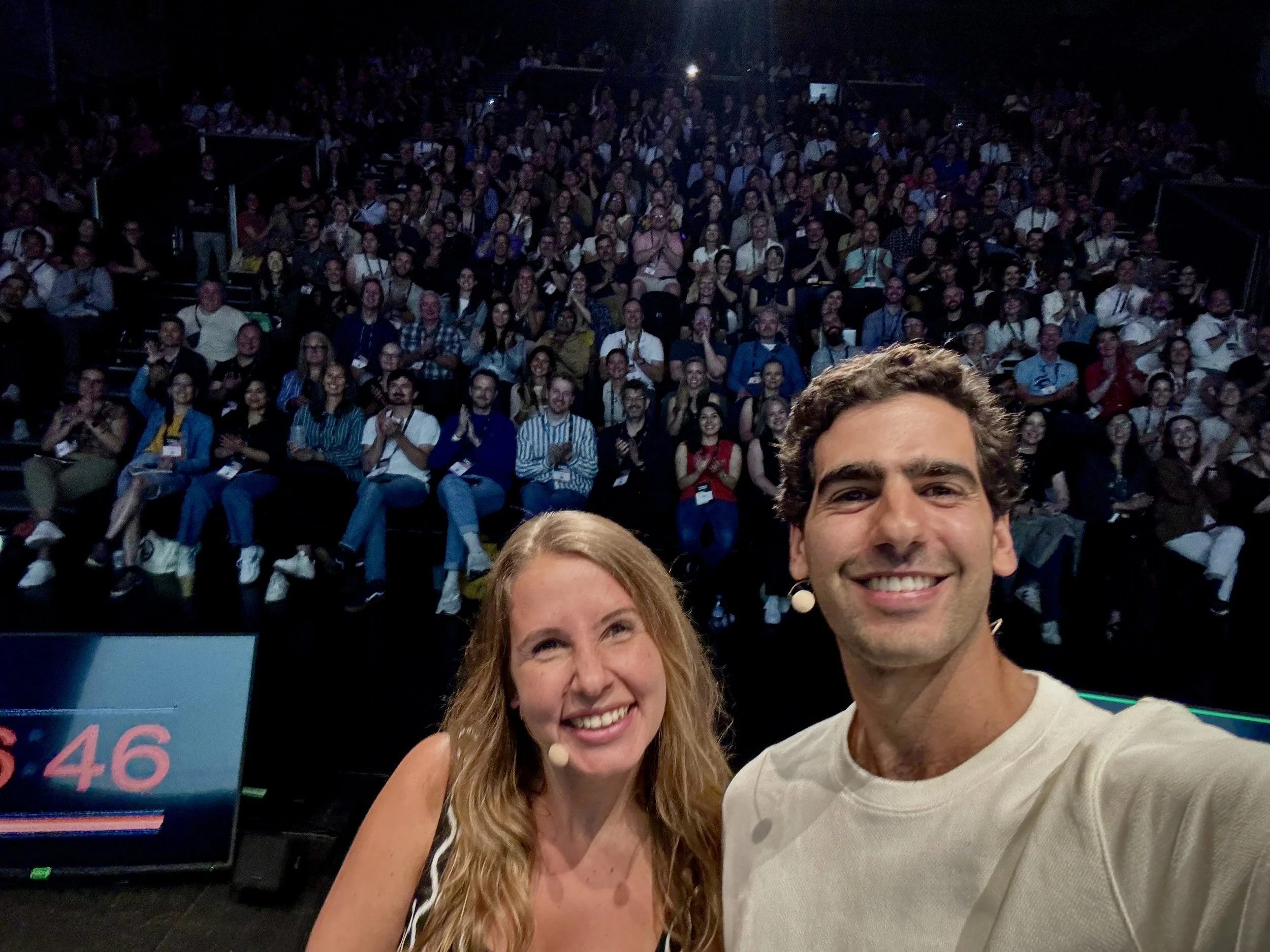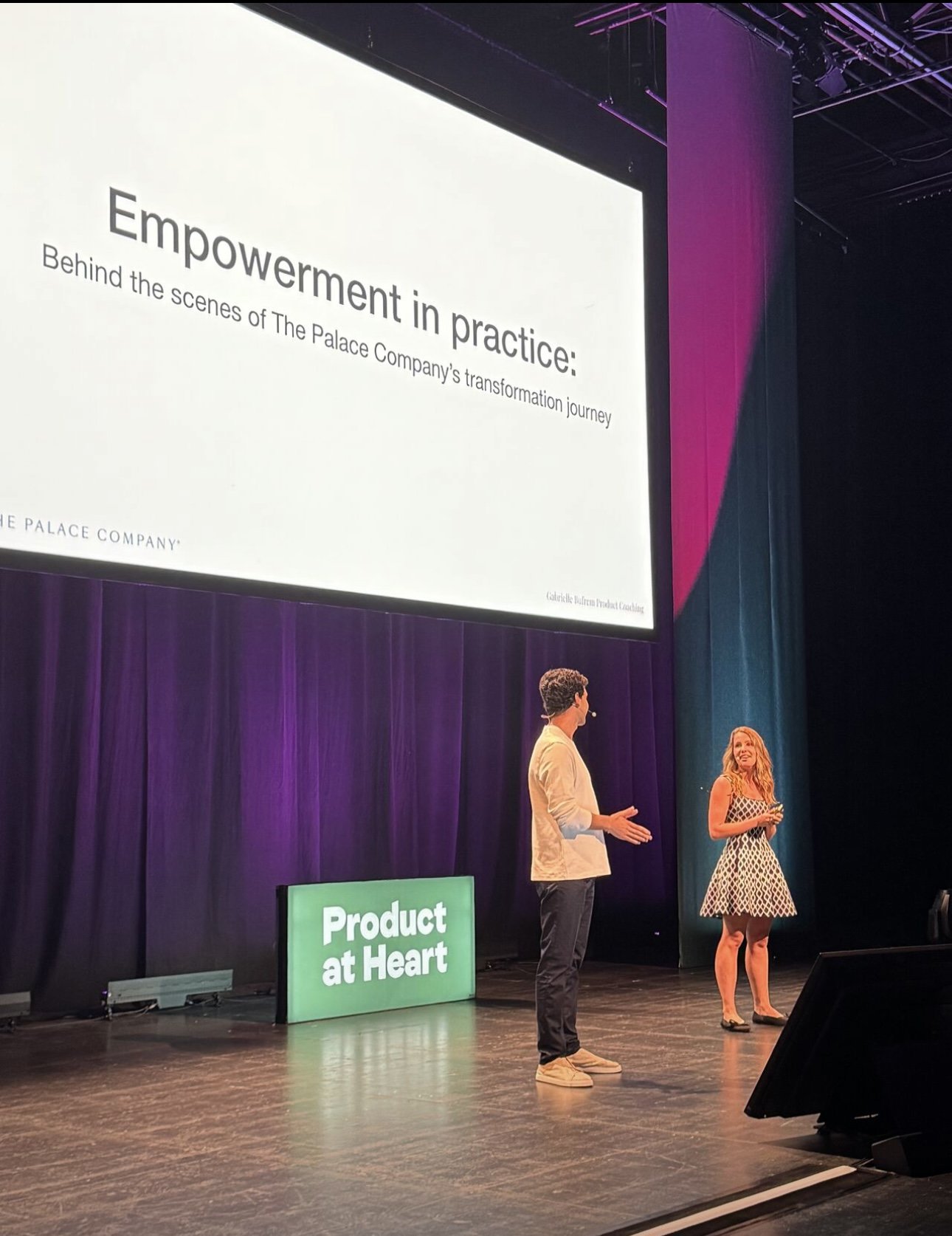How a luxury hotel chain transformed from ordertakers to problem-solvers and increased conversion by 38%
CLIENT STORY
Watch our Talk
In the heart of Mexico's vibrant hospitality industry, The Palace Company faced mounting pressure. Guest expectations for seamless experiences were rising, while companies like Expedia and Airbnb were reshaping how we travel. The four brothers who ran this luxury hotel chain recognized that their future success would depend on more than excellent service – they needed to become a technology-enabled hospitality leader.
Despite significant investment in technology and a carte blanche approach to resources, The Palace Company struggled with:
The Palace Transformation
By The Numbers
15,000 employees
across 7 countries affected by a dysfunctional technology department
12+ months
of failed "fake agile" implementation that worsened team performance
1 fearless leader
who declared "There is no Plan B" for transformation
1 pilot team
that demonstrated the power of true product-led development
First-ever user interviews
conducted, preventing a multi-million dollar mistake
30%
more guests
now able to dine at specialty restaurants through datadriven solutions
40% increase
in active travel agency partnerships in just one quarter
38% boost
in website conversion rate after shifting from featurebuilding to problem-solving
Several millions of dollars increase
in sales with a product built in less than a quarter
433% increase
in member website adoption reaching 80% adoption
3 fundamental shifts
how they build, how they solve problems, and how they decide which problems to solve
0 new features
needed to improve the reservation flow—just deeper user understanding
From Chaos to Clarity
The Journey
In the heart of Mexico's vibrant hospitality industry, The Palace Company faced mounting pressure. Guest expectations for seamless experiences were rising, while companies like Expedia and Airbnb were reshaping how we travel. The four brothers who ran this luxury hotel chain recognized that their future success would depend on more than excellent service – they needed to become a technology-enabled hospitality leader.
Despite significant investment in technology and a carte blanche approach to resources, The Palace Company struggled with:
A chaotic project-based structure with 100+ developers but no product managers, designers, or tech leads
Projects consistently exceeding timelines by months and not delivering expected business results
Growing technical debt from rushed deliveries
Requirements flowing directly from executives with impossible deadlines
Low team morale and minimal consideration for actual user needs
Their initial transformation attempt only made things worse. They implemented a "software factory" model that:
Created a fake agile environment masking traditional waterfall processes
Established product owners who merely "translated" requirements rather than driving outcomes
Maintained siloed development teams with complex handoffs
Reinforced a supplier-client dynamic between IT and "the business
After a year of overpromising and underdelivering, patience across the company was at its lowest.
Proving What’s Possible
The Pilot Team
The breakthrough came when Anuar, the youngest of the four brothers, stepped in as VP of IT. Though he had no real experience in technology, he was committed to making it work. He got agile-certified and completed a development bootcamp, initially focusing on finishing projects as quickly as possible.
But something wasn't right. When Anuar encountered Marty Cagan's "outcomes over outputs" philosophy, he recognized the deeper issue: the team was efficiently delivering outputs that weren't solving actual problems.
After attending an SVPG Transformation workshop, Anuar partnered with product coach Gabrielle Bufrem to implement the Product Operating Model. Instead of another companywide reorganization, they took a targeted approach:
Building stakeholder alignment around a new vision for technology's role
Creating a pilot team to demonstrate the potential of true product-led development
Embracing The Product
Operating Model - The Turning Point
To show results fast, Gabrielle asked Anuar for his best PM, designer, tech lead, and engineers to create a pilot team. This team quickly demonstrated what was possible when building products that customers love and drive business results:
They conducted the company's first-ever user research
They prevented a multi-million dollar mistake by invalidating a costly idea
They built features that drove real business value
As other teams noticed these results, they began asking: "When can we start working this way?" The grassroots momentum was building.
Scaling the Transformation
To successfully scale, the transformation focused on three core changes:
Changing How
They Build
Small, frequent, reliable releases instead of big, risky launches
Changing How
They Solve Problems
Teams are given problems to solve and outcomes to achieve, not feature lists
Changing how they decide which problems to solve
Teams are given problems to solve and outcomes to achieve, not feature lists
But the transformation wasn't without challenges. Despite the pilot team's success, the board still didn't fully trust the technology team's ability to find, design, test, and develop what was needed. A major disagreement with Sales and Marketing threatened to revert to command-and-control approaches.
Resolution came when Anuar sat down for a full day with the VP of Sales, showing the results they'd achieved and how aligned they were on solving real problems. They emerged with a new agreement: Sales would provide company strategy and goals, and together both teams would align on the right problems to solve. The technology team would discover, test, and deliver the solutions.
As Product Management improved, weaknesses in Engineering and Design leadership became apparent. Despite efforts to bring them along on the journey, ultimately a complete overhaul in leadership was needed to continue the transformation.
Results That Speak For Themselves
Problem
Guests couldn't find reservations at specialty restaurants they wanted to try
Approach
The team physically visited hotels, interviewed guests and staff, and analyzed booking and cancellation patterns
Guest Dining Experience
Solution
They changed booking policies, improved the reservation flow, and created a smart waitlist that prioritized guests who hadn't visited a restaurant and whose checkout dates were approaching
Result
30% more guests were able to dine at specialty restaurants
Problem
After a failed new website project, conversion rates remained flat.
Approach
The team shifted focus from completing a backlog to understanding user behavior through experimentation & data
Website
Conversion
Solution
They simplified the guest profile creation process and enhanced payment link functionality based on user discovery,
Result
38% increase in website conversion rates over several quarters.
Problem
Agencies were onboarding but not actively selling.
Approach
Product, sales, customer success, marketing, design, technology, and data collaborated to understand agency needs.
Travel Agency
Engagement
Solution
They stabilized the platform, eliminated features causing friction, and added targeted capabilities that solved real problems.
Result
40% increase in active travel agencies in just one quarter.
Problem
The sales staff did not have enough context on guests to sell them into Palace’s membership program
Approach
The team physically visited hotels, interviewed guests and staff, and analyzed the end-toend sales process
Sales
Enablement
Solution
They built out an intelligent profile on each guest and improved the sales equity, focusing on the most relevant information to help each sale close.
Result
4Several millions of dollars increased per year in sales.
The Key To Success
What made this transformation possible? In one pivotal conversation, Gabrielle asked Anuar: "What if this does not work out? What's plan B?"
His answer: "There's no plan B - this is it."
This fearless determination, combined with openness to seek help and grow, transformed not just their processes but the entire organizational mindset.
Today, The Palace Company's teams receive strategic problems to solve rather than requirements lists. They collaborate with stakeholders, clients, and each other to discover, test, deploy, and measure solutions that drive real value—transforming from order-takers to true problem solvers. As Gabrielle reflects: "We're a year in, it's really exciting. We have a lot more to do and I can't wait for what's next to come."




